I have an SSRS dataset that looks like this:
The dataset rows are generated independent of each other using UNION ALL. I need to display these rows in my report as is, but I need to add an additional row that will calculate Total Won / Total Lost, so the result should look like this:
This is just sample as I have more columns (1 per month) and the whole thing is broken down by product, so if I have 10 different products, I will have 10 different tablix tables.
Basically I need to somehow create an expression that will only calculate values in 2 rows of the tablix out of 3 (based on the value of the Status column) and take into consideration that some values can be zeroes.
Here's the query (I simplified it a bit for better understanding):
select * from
(
select 'Created' as 'State', fo.groupidname, fo.businessidname ' Business', fo.opportunityid
from FilteredOpportunity fo
where fo.regionidname = 'Americas Region'
and fo.createdon >= dateadd(year, -1, getdate())
and fo.regionalfeeincome >= 250000
) created
pivot
(
count(created.opportunityid)
for created.groupidname in ([Boston], [Chicago], [Colombia], [Group D.C.], [Houston], [Los Angeles], [New York], [San Francisco], [Seattle], [Toronto])
) pivCreated
union all
select * from
(
select 'Won' as 'State', fo.groupidname, fo.businessidname ' Business', fo.opportunityid
from FilteredOpportunity fo
where regionidname = 'Americas Region'
and fo.actualclosedate >= dateadd(year, -1, getdate())
and regionalfeeincome >= 250000
and fo.jna is not null
) won
pivot
(
count(won.opportunityid)
for won.groupidname in ([Boston], [Chicago], [Colombia], [Group D.C.], [Houston], [Los Angeles], [New York], [San Francisco], [Seattle], [Toronto])
) pivWon
union all
select * from
(
select 'Lost' as 'State', fo.groupidname, fo.businessidname ' Business', fo.opportunityid
from FilteredOpportunity fo
where fo.regionidname = 'Americas Region'
and fo.actualclosedate >= dateadd(year, -1, getdate())
and fo.regionalfeeincome >= 250000
and fo.sys_phasename <> 'Pre-Bid'
) lost
pivot
(
count(lost.opportunityid)
for lost.groupidname in ([Boston], [Chicago], [Colombia], [Group D.C.], [Houston], [Los Angeles], [New York], [San Francisco], [Seattle], [Toronto])
) pivLost
TIA -TS.

